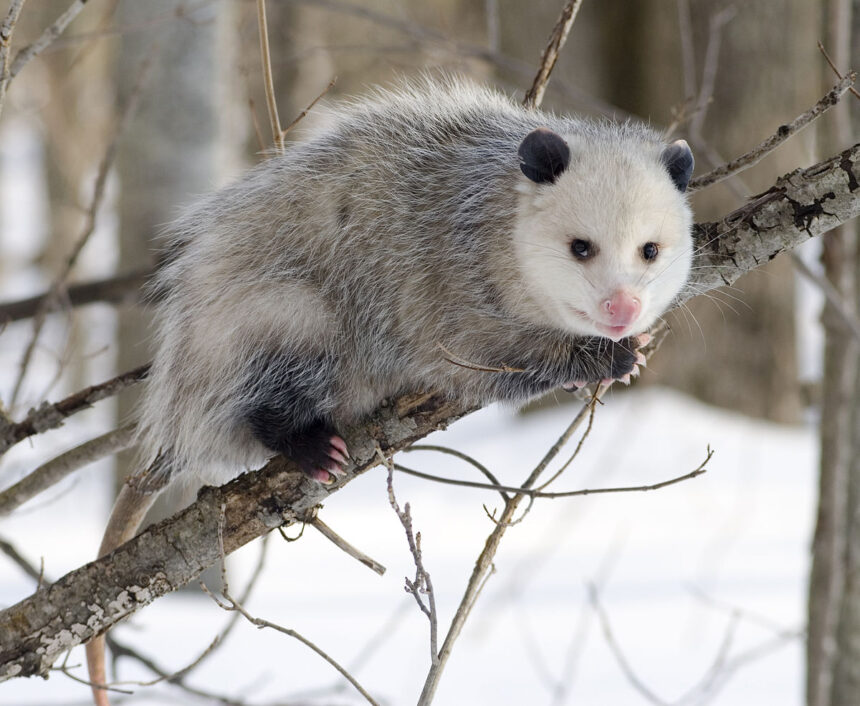The “tñacuache,” known scientifically as Didelphis virginiana, is a fascinating creature commonly referred to as the Virginia opossum. This marsupial is native to North America and holds a unique place in the ecosystem. In this blog post, we will delve into the biology, behavior, and significance of the tñacuache, along with some interesting facts and frequently asked questions about these nocturnal animals.
Biology of the Tñacuache
The tñacuache is the only marsupial found north of Mexico, characterized by its white face, grayish body, and long, hairless prehensile tail. Adults typically measure about 2.5 feet in length from nose to tail and weigh between 4 to 14 pounds. Their opposable thumbs and prehensile tails make them adept climbers, often seen scaling trees or fences with ease.
Reproduction and Lifespan
Tñacuaches have a relatively short lifespan, usually living for about 2 to 4 years in the wild. Females give birth to tiny, underdeveloped young that crawl into the mother’s pouch to continue their development. This pouch phase is a defining characteristic of marsupials and lasts for about 2 months before the young begin to explore the world outside.
Behavior and Diet
Tñacuaches are nocturnal, which means they are most active at night. They are omnivorous scavengers, feeding on a varied diet that includes fruits, insects, small animals, and even carrion. Their role as scavengers helps in controlling pests and cleaning up dead animal matter, making them an essential part of the ecosystem.
Adaptability and Habitat
These creatures are incredibly adaptable, thriving in various environments from woodlands and farmlands to urban areas. Their ability to survive in diverse habitats is due to their opportunistic feeding habits and their skill at avoiding predators through “playing possum” — a behavior where they mimic the appearance and smell of a dead animal to deter threats.
Significance in Culture and Ecosystem
In many cultures, tñacuaches are seen as symbols of resilience and adaptability. They also play a crucial role in the ecosystem by helping to control insect populations and clean up carrion. Despite their benefits, they are often misunderstood and sometimes regarded as pests, particularly in urban areas where they can get into garbage or pet food.
Interesting Facts About Tñacuaches
- Immune to Snake Venom: Tñacuaches have a natural immunity to the venom of some snakes, including rattlesnakes, which allows them to prey on these dangerous reptiles.
- Disease Resistance: They have a lower body temperature compared to other mammals, which makes them less susceptible to diseases like rabies.
- Ancient Lineage: The Virginia opossum is one of the oldest surviving mammals, with ancestors dating back to the age of dinosaurs.
FAQs about Tñacuaches
Q: What should I do if I encounter a tñacuache in my yard? A: Generally, it’s best to leave them alone. Tñacuaches are non-aggressive and will usually move on after a short period. If you need to encourage them to leave, secure food sources like garbage cans and pet food.
Q: Are tñacuaches dangerous to pets? A: Tñacuaches are not typically dangerous to pets. They are more likely to avoid confrontation and may “play dead” if threatened. However, it’s still a good idea to keep pets away from wild animals to prevent any potential conflicts or transmission of parasites.
Q: Can tñacuaches climb fences? A: Yes, tñacuaches are excellent climbers thanks to their prehensile tails and opposable thumbs. They can easily scale fences and trees.
Q: Do tñacuaches carry diseases? A: While tñacuaches can carry parasites like fleas and ticks, they have a lower risk of transmitting rabies due to their lower body temperature. It’s always a good practice to avoid handling wild animals to prevent the spread of any potential diseases.
Q: How can I keep tñacuaches away from my property? A: To deter tñacuaches, secure garbage bins, bring pet food indoors at night, and close off any entry points to your home, such as gaps under decks or in your attic.
Tñacuaches, or Virginia opossums, are remarkable creatures that contribute significantly to our ecosystems. By understanding their behavior and role in nature, we can coexist with these resilient animals and appreciate the unique characteristics that make them so special.
Suggested Read: Gamer25glow: The Future of Gaming Illumination





